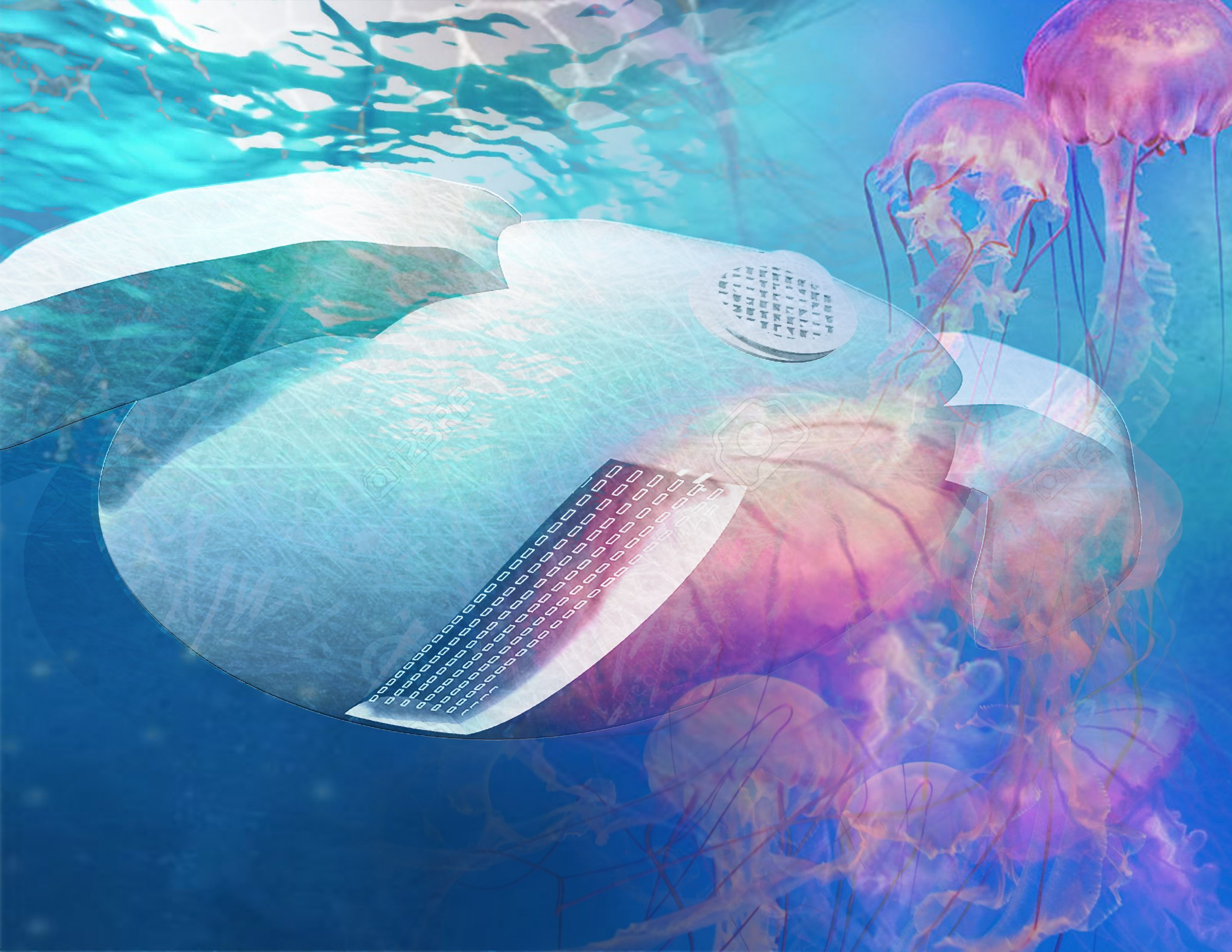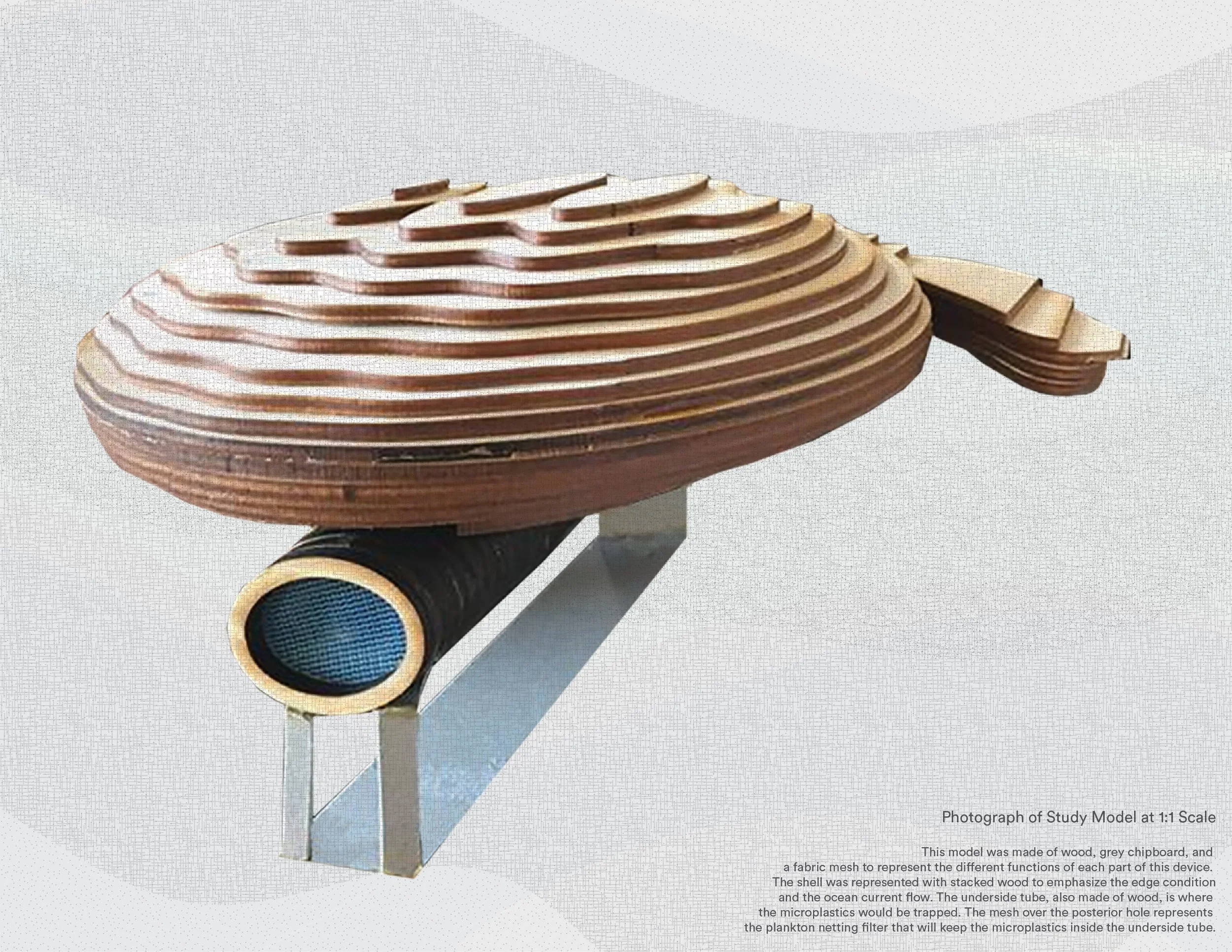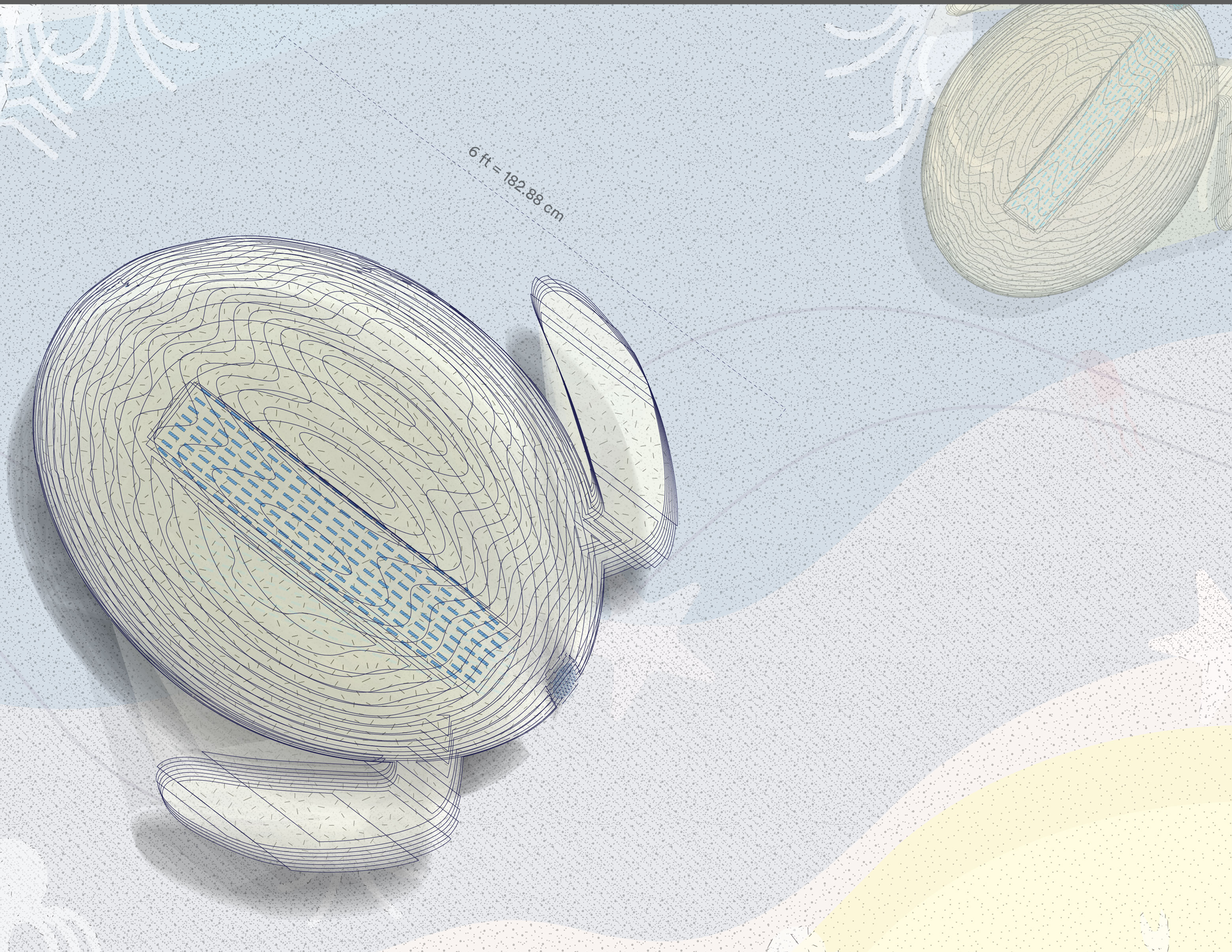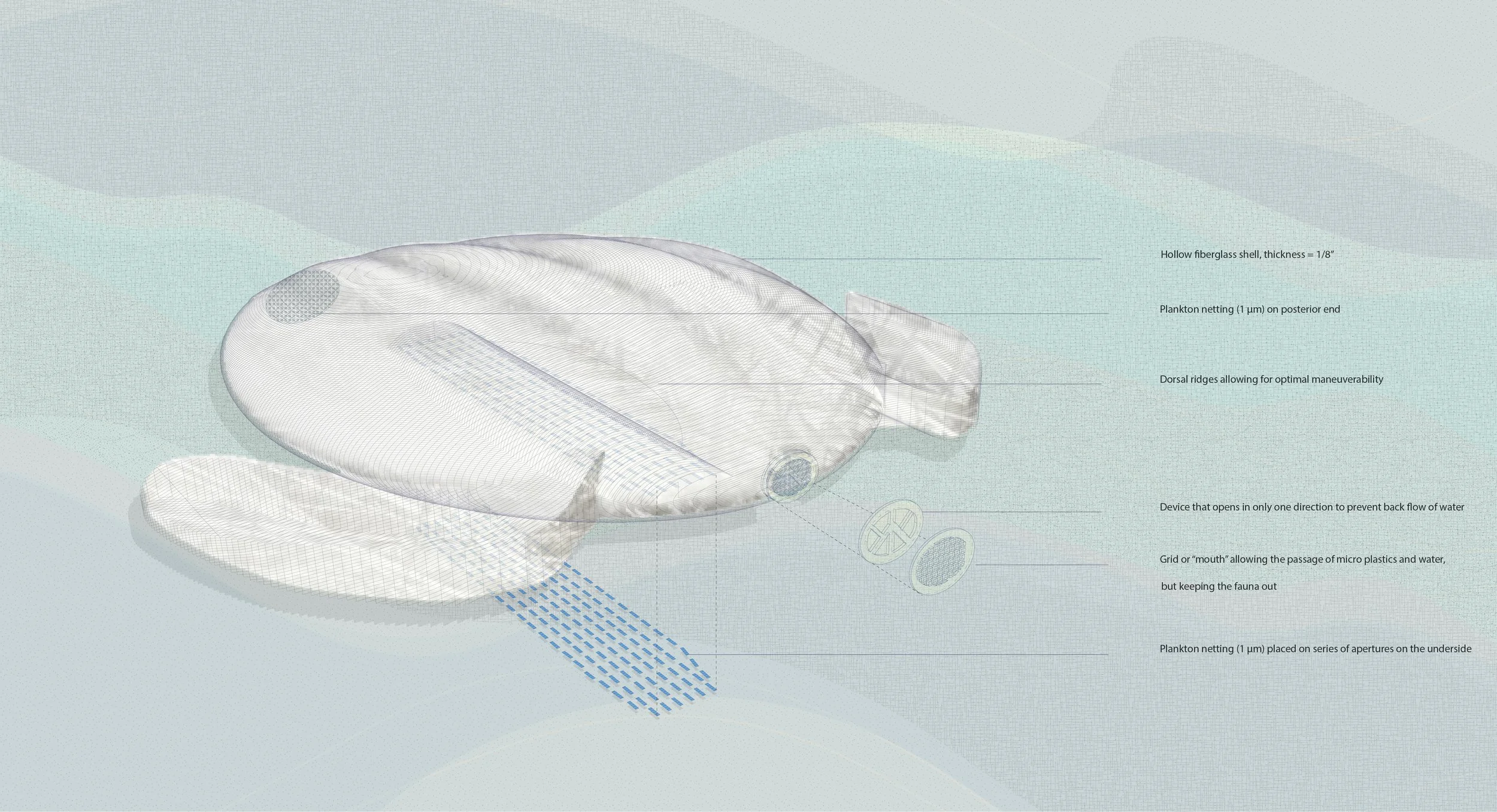
Flipper Filter is an economically and environmentally friendly device designed to help clean the oceans of microplastics and protect marine fauna. As a hydrodynamic device that moves through the ocean, it filters out microplastics that endanger marine life and potentially humans. Flipper Filter’s structural ridges are dictated by the morphological tectonics of leatherback sea turtles. Its bioinspired design allows for more efficient maneuverability in the water as its dorsal longitudinal ridges are misaligned from streamlines to generate stream wise vertices increasing hydrodynamic performance in the open ocean. Secondly, Flipper Filter also takes inspiration from filter feeding baleen whales. Just as baleen whales take in ocean water and use their tongue to capture food and create a high pressure system to release water laterally and via openings near the back of their mouths, Flipper Filter will receive ocean water containing microplastics and as the water flows both to the posterior end and ventrally to the microplastic filters, it traps the polluting microplastics. When water containing microplastics flows to the back of the device where a microplastic filter made of plankton netting catches the tiny pollutants, pressure begins to build up. As pressure builds, the flow is directed to the posterior direction and out the bottom openings, also covered with plankton netting, trapping the microplastics within the device.
Photograph of Study Model at 1:1 Scale. This model was made of wood, grey chipboard, and a fabric mesh to represent the different functions of each part of this device. The shell was represented with stacked wood to emphasize the edge condition and the ocean current flow. The underside tube, also made of wood, is where the microplastics would be trapped. The mesh over the posterior hole represents the plankton netting filter that will keep microplastics inside the underside tube.
Dorsal view of Flipper Filter
Diagram representing water and microplastic flow and capture. The dark blue arrows represent the direction of the ocean current flow through the Flipper Filter. The ocean current itself represented by the various shades of blue swirls and the microplastics represented by the various shades of green dots. As water and microplastics flow through the underside tube, water and microplastics pass through the first door keeping larger ocean fauna out, and under the device as pictured in the top two renderings. Then, the water and microplastics inside the tube flow through to exit the tube either out the posterior end covered with plankton netting or via the exits on the ventral or underside of the tube covered in plankton netting as seen in the bottom rendering.
Exploded diagram of Flipper Filter of design. Here you can see the different features included: Hollow fiberglass shell, thickness=1/8". Plankton netting (1um) on posterior end. Dorsal ridges allowing for optimal maneuverability. Device that opens in only one direction to prevent back flow of water. Grid or "mouth" allowing the passage of microplastics and water, but keeping the fauna out. Plankton netting (1um) placed on series of apertures on the underside.
3D Rendering



